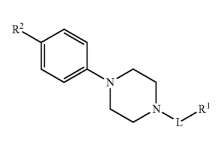BACKGROUND
Parasitic nematodes are a major problem in agriculture where their infection of livestock and parasitization of plants are a threat to food security and result in billions of dollars of lost productivity. Several classes of nematicides, compounds that are toxic to nematodes, have been approved and successfully integrated into the food generation process. However, two problems with current nematicides are increasing resistance to their effects and serious concerns with their environmental impact, the latter of which has led to withdrawal of commercially successful nematicides from general use. Indeed, of the 20 key nematicides used over the last century, less than 20% are currently approved for use in the European Union and United States without restriction. This has driven a need for new anthelmintic and nematicidal compounds to ensure the continued security of agricultural produce.
TECHNOLOGY
Researchers at the University of Toronto have discovered two small molecule scaffolds for potential use as nematicides in agricultural applications. They first developed a C. elegans-based screen predictive of bioactivity in parasitic nematodes and screened 67,012 commercially available small drug-like molecules to identify 627 ‘worm active’ (WACT) compounds. From this subset, they identified the two molecular scaffolds, nemacol and nementin comprised respectively of nitrophenyl-piperazine and alkyl phenylpiperidine backbones (Figure 1). Mechanistic studies revealed that nemacol operates through inhibition of the vesicular acetylcholine transporter (VAChT), while nementin agonizes neuronal dense core vesicle release. Both scaffolds disrupt nematode motor function and display synergistic effects with existing nematicidal agents.
Figure 1. Markush structures of nemacol and nementin scaffolds.
COMPETITIVE ADVANTAGE
- Potent in vivo activity against nematodes
- Nemacol and Nementin EC50 <10 uM (tested in H. contortus, C. oncophora, D. immitis, N. strongylus)
- Nemacol 5x more potent than vesamicol
- Selective targeting of nematodes
- Nemacol has an ~ 10-fold reduction in affinity for mammalian VAChT receptor
- Nementin has an ~10-fold reduction in activity in mammalian, fish and plant model systems
- Easy and Inexpensive Synthesis
- Two-step, metal-free synthesis route for Nemacol
- Two or Three-step synthesis route for Nementin (some analogs required metal-catalysts)
- Synergistic effects with approved nematicides
APPLICATIONS
- Nematicides and anthelmintics for treatment of parasitic nematode infections in animals and plants
INTELLECTUAL PROPERTY STATUS
- Nationalized: CA, US (WO2020051689A1)
PROJECT STATUS
A screen of 67,012 commercially available small drug-like molecules was conducted to isolate a subset of compounds from which the two scaffolds were then isolated. EC50 values were determined in free-living nematodes, parasitic nematodes, and non-target models (e.g. HEK293, rat, zebrafish, plant models). The mechanism of action was determined using enhanced, loss-of, and reduced-function mutants. Synergistic effects were determined for compatible, commercially-available nematicides.





